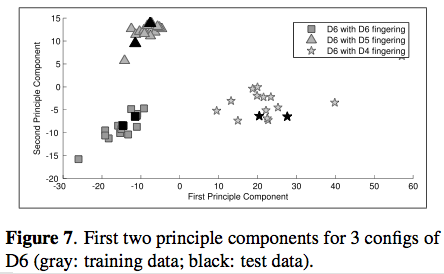CONtrôle de SONs instrumentaux Naturels Et Synthétiques
| Participants: |
Vincent Verfaille Marcelo M. Wanderley |
|

|
|---|---|---|---|
| Collaborators: |
Jean Kergomard (LMA, CNRS, Marseille, Fr – coordinator) René Caussé (IRCAM, Paris, Fr) Denis Matignon (ENST, Paris, Fr) Philippe Guillemain (LMA, CNRS, Marseille, Fr) Richard Kronland-Martinet (LMA, CNRS, Marseille, Fr) Christophe Vergez (LMA, CNRS, Marseille, Fr) Thierry Voinier (LMA, CNRS, Marseille, Fr) |
|
|
| Funding: |
Agence Nationale de Recherche (ANR - France) Québec's Ministry of Economic Development (PSIIRI Grant) |
||
| Project Type: | Collaborative Project. | ||
| Time Period: | Jan. 2006–June 2009. (completed.) | ||
Project Description
The aim of the project “CONSONNES” is to assemble, at the Laboratoire de Mecanique et d'Acoustique (LMA, CNRS, Marseille, Fr) an international body of theoretical and experimental expertise in the area of control of both acoustic and virtual representations of musical instruments. Wind instruments and bowed string instruments in particular depend crucially on non-linear excitation mechanisms (self-oscillations), driven by low frequency energy supplied by a performer, and are directly linked to the problem of control. The development of theoretical models, and related numerical simulation methods, as well as the concomitant experimental work are of fundamental importance, and necessitate a broad interaction among researchers across a wide variety of disciplines; Consonnes is directed toward facilitating this communication.
The mastery of playing technique for an acoustic instrument (i.e., its control) is a difficult and lifelong pursuit. The quality and reproducibility of a musical performance depend on the level of technique attained; this technique could well be described in terms of various system parameters (still not well understood), and the interaction between the player and the instrument. One general goal of the Consonnes project is to solidify the understanding of the breakdown of the instrument model into its constituent parts (in particular the resonator), and to characterize the different modes of operation of the instrument in terms of control parameters supplied by the player.
In addition to theoretical work, considerable groundwork on numerical techniques will also form a large part of the project. Numerical simulation is an important tool for the validation and investigation of theoretical models provided that the fidelity to the continuous time model or to physical measurements is respected. It is conceivable that such numerical models could be used to estimate control parameters based on measured output signals.
Though models of musical instruments have reached a high degree of refinement with respect to steady-state behaviour, transient behaviour, which can be of great musical importance, is far less well understood. The Consonne project will examine the transient control problem in great detail, and in this respect, goes far beyond the current boundaries of knowledge.
A robot musician, independently of how controllable it may be, is generally deaf, and thus incapable of adapting its behaviour in response to the sound it produces. A further goal of Consonnes is to develop an ensemble of means to acquire gestures of performers in order to obtain real data on actions of instrumentalists and to develop new control interfaces for numerical sound synthesis. The Consonnes project is one of fundamental importance and significance to the performance of music and the music industry.
IDMIL Participation
Our participation to CONSONNES is related to research axis II (Modèles numériques de synthèse temps-réel: optimisation, problèmes directs et inverses, discrétisation, contrôle automatique, Vincent Verfaille) and to research axis IV (Jeu instrumental, geste et contrôleurs gestuels, Vincent Verfaille and Marcelo M. Wanderley, co-director for this axis).
Our main projects in these axis are:
- Sound Synthesis Using Physically-Informed Signal Models (axis II)
- Indirect Acquisition of Instrumental Gestures (axis IV)
- Gestures Analysis, including sonification of performer movements (axis IV)
- Gestural Controller Design and Evaluation (axis IV)
